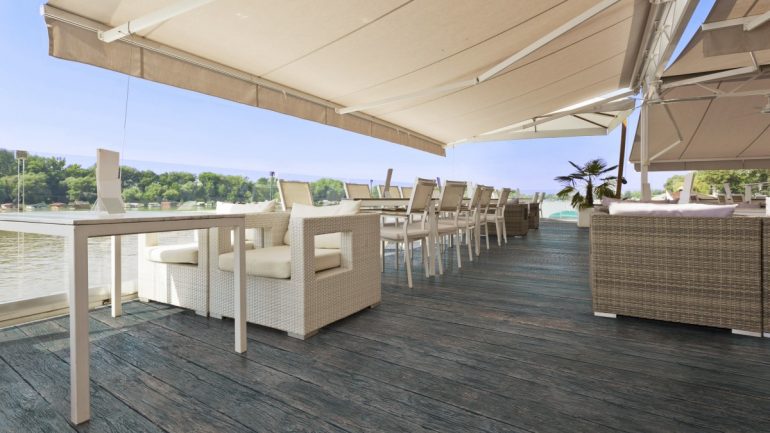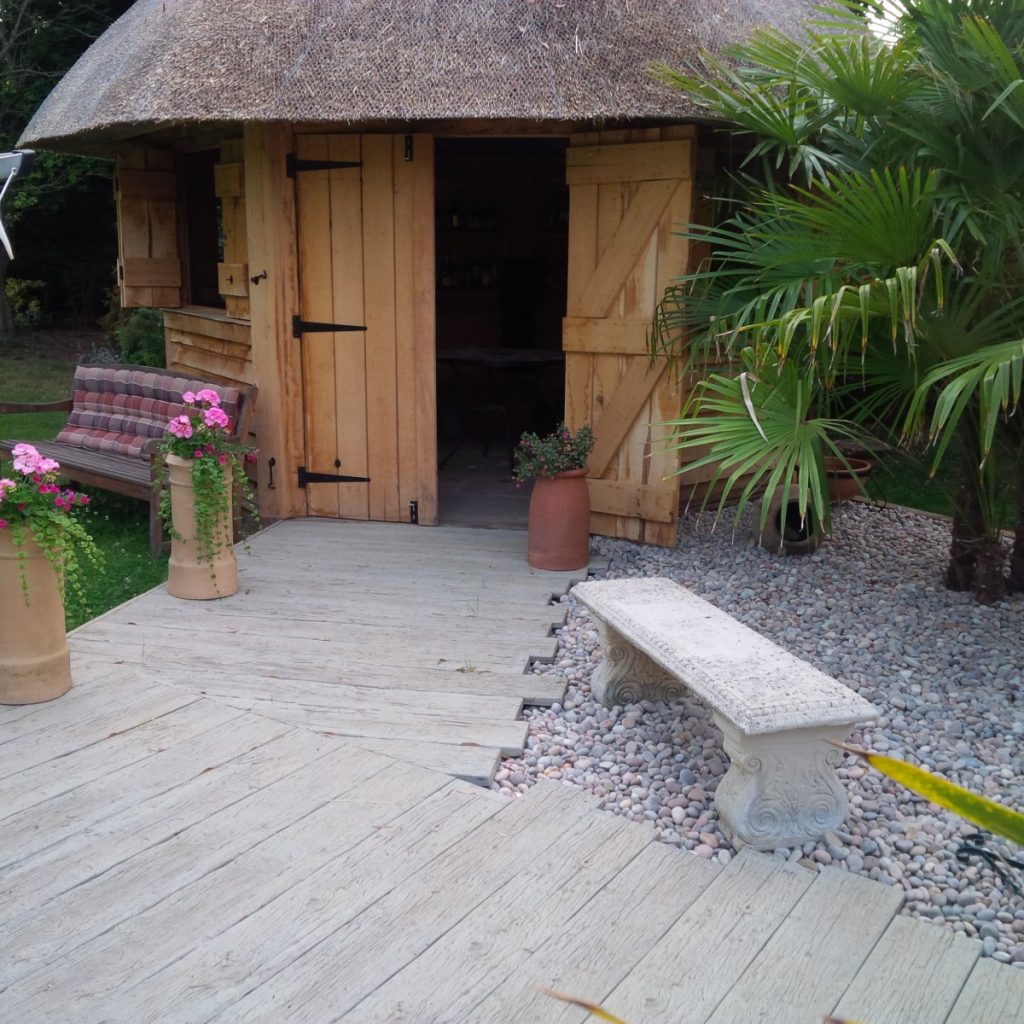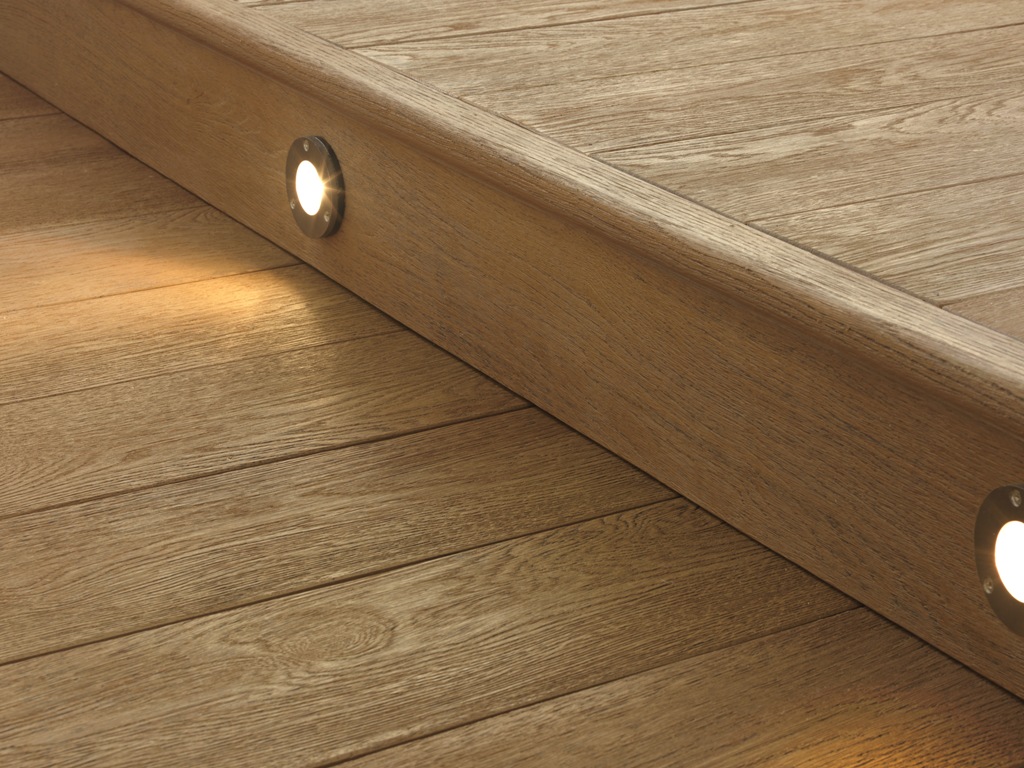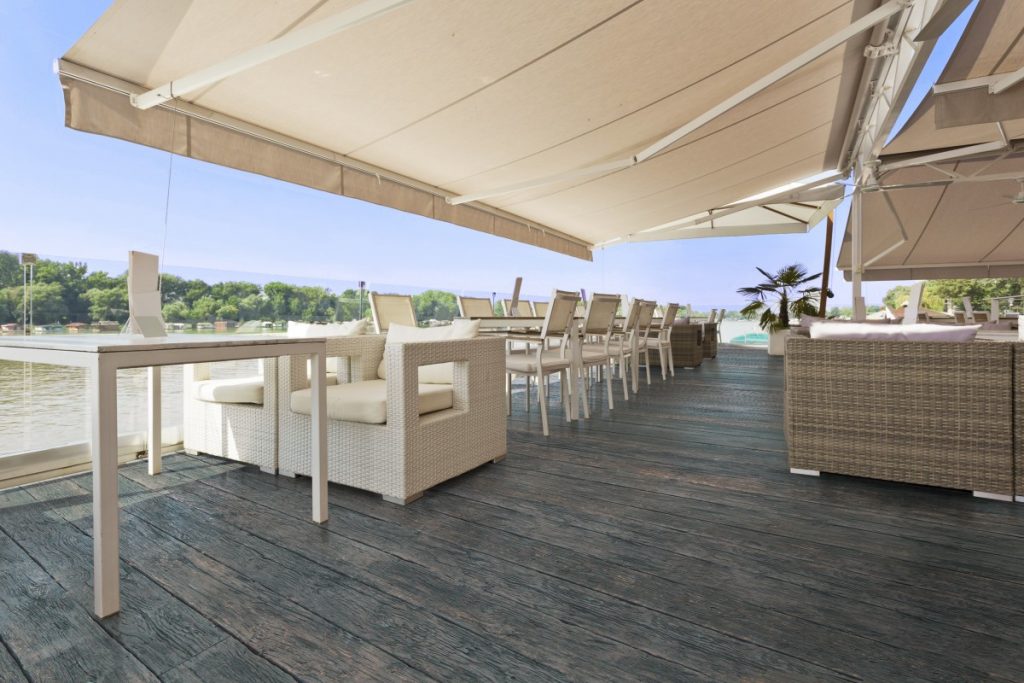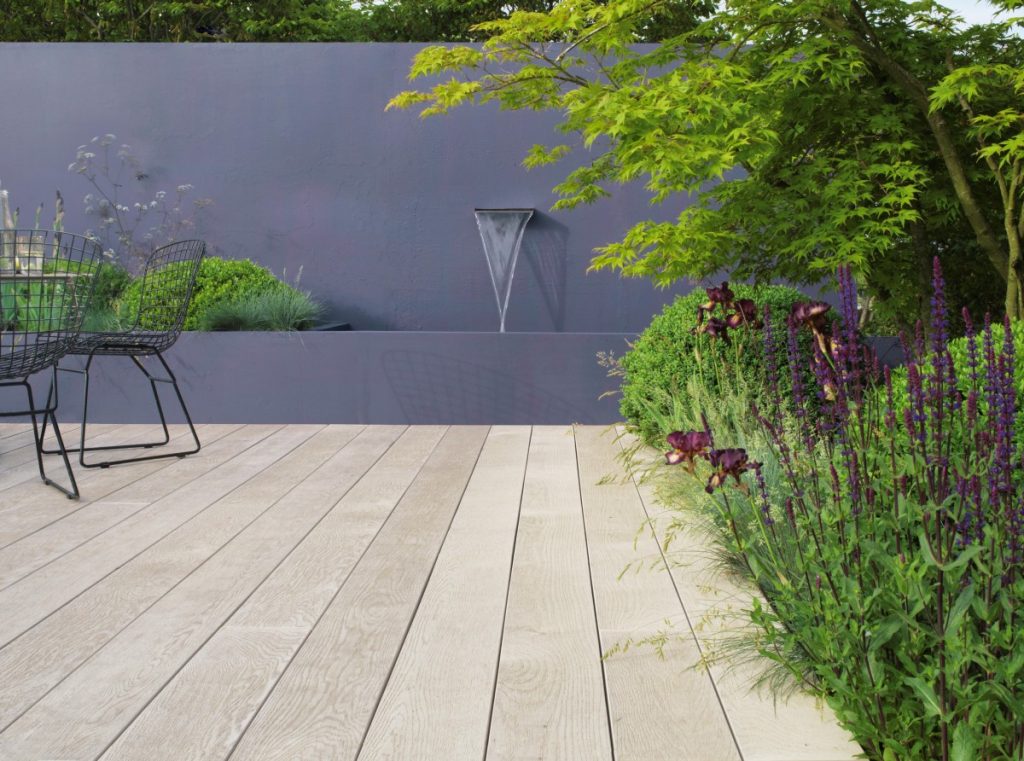Adding a deck to your garden gives you a natural space to relax, entertain friends and enjoy being outside. It will inevitably become the part of the garden where you spend more time than any other. It makes sense, then, to put your deck at the heart of your garden’s design. These days, decking comes in a whole range of options, so what are the variables to consider?
The most obvious is colour. Natural timber comes in a range of tones, according to the tree it comes from, and can be stained or painted a multitude of shades, from the pale tones of lime-washed wood to the near-black achieved by using the Japanese Yakisugi technique. The natural options are emulated in composite decking, so you can pick the colour you want without having to paint, stain or char to get the effect desired. In some settings, you may not even want to stick to a single colour – contrast edging or stripes of different colour can work really well.
Less obvious than the colour, but just as important, is the texture. Usually, a smooth surface is selected, not least because it’s the most comfortable to walk on in bare feet, but it is possible to choose boards with a lot more texture. For example, the ‘Weathered Oak’ range from Millboard is moulded from carefully selected timbers taken from vintage oak trees, giving it a rich and deep grain. Unlike actual wood timbers, it has a special non-porous surface that is highly resistant to staining and completely splinter-free, making it as foot-friendly as newly planed and sanded timber. The instantly achieved vintage look makes it perfect to use alongside traditional properties, but is also very attractive in a wide range of settings.
The look of a deck can also be transformed by how it is laid. As simple a consideration as the direction in which boards are laid can have a significant impact on the overall effect. This is also true of how the edge is finished. An overhanging edge strip can add a real touch of class, especially in a curved ‘bullnose’ profile.
A deck can also be raised above the ordinary by the addition of lighting, which adds a valuable element of safety as well when used to help define edges and steps. Although free-standing lighting can be used, this usually leaves unsightly cables on show, but it is usually possible to integrate lighting into the decking itself. Wiring can be hidden under the surface within the sub-frame space, while the lights themselves can either be visible or concealed – the latter creates a beautiful, soft and relaxing look.
Each of these variables will impact on how your deck sits within your garden as a whole, so take time to consider all the options and the effect you are trying to achieve. Dark, deeply textured options work well with lush planting schemes, while soft hidden lighting is excellent for creating cosy places to retreat to in many an urban garden. There are no hard and fast rules, though, so go with whatever floats your own particular boat!

